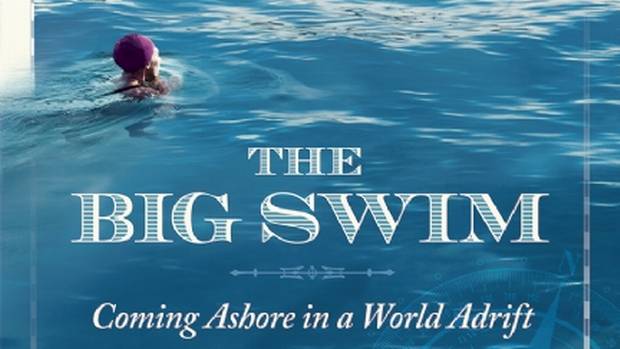Story Time for Climate Activists: The Big Swim
From guest blogger Carrie Saxifrage
In Don’t Even Think About It: Why Our Brains Are Wired to Ignore Climate Change, George Marshall compiled research on brain science as it pertains to the slow action on climate change. The key insight is that, while scientific evidence is important, it isn’t what inspires people to act. Marshall describes two minds, the emotional mind and the rational mind. They communicate and influence each other but decisions to act arise in the emotional mind. The language that reaches the emotional mind is one of meaning, metaphor, image and stories that speak to existing values.
Here are six of Marshall’s suggestions for reaching the emotional mind when we talk about climate change:
- Invoke widely held values
- Understand that a high emissions lifestyle undercuts our trustworthiness as communicators
- Speak with emotional honesty
- Avoid enemy narratives
- Frame climate action as a quest in which we seek to overcome our own weaknesses
- Connect climate action to sources of happiness
Most important of all, he recommends that we tell stories.
My new book The Big Swim uses the tools of literary memoir. Marshall’s book didn’t exist when I wrote it, but my writing colleagues gave me the same messages. They wanted to know why I care so much about climate change, so I named my sacred values – my son and the natural world. The chapter about a bus trip to Mexico following my decision to not fly made me trustworthy because it brought home my commitment to climate action on a personal level. They were relieved to not have to “take sides” in the way enemy narratives require – especially the colleague whose son works in the oil sands. She wouldn’t read a disparagement of that industry, but took interest in the Northern Gateway pipeline from a First Nations perspective and how I let climate change shape my personal choices. My colleagues related to my overarching quest for adventure, happiness and meaning.
Some of the resulting stories that have less to do with climate change more to do with how underlying values play through life events: my mom’s death, some hard core adventures in nature (like swimming five miles in the ocean), community escapades involving giant rabbits and pumpkins, and a building project gone awry due to an ancient jawbone found on our land. Other stories address climate change directly: a search for pikas, a species impacted by climate change; low carbon adventures like sleeping a lot, with its surprising political implications; and the ideas and practices that build my resilience in the face of difficult knowledge. Because my writing colleagues had no deep interest in climate change, each story stands on other merits: humor, narrative arc, sensuality and emotional honesty.
I crafted The Big Swim to the purpose of outreach. My intention is that people who understand the urgency of climate change will use The Big Swim as a tool. Many people just need an accessible way in that won’t overwhelm them with the magnitude of the problem. They will find the climate information and perspectives in The Big Swim encased in curious and wild adventures. Nor is The Big Swim too depressing: its essential message is that action, any action, feels better than none.
People actually do want to know how we negotiate that complex, unarmed place of grief, hope, despair and determination. Marshall notes that people who deal with climate change as a reality every day provide an important insight into the ways that humanity will cope. Your stories as well as mine can dig down to commonly held values and interests and then work forward from there to shine the way toward climate action.
For more information on The Big Swim and Carrie’s cross-country book tour by bus, visit http://carriesaxifrage.com

